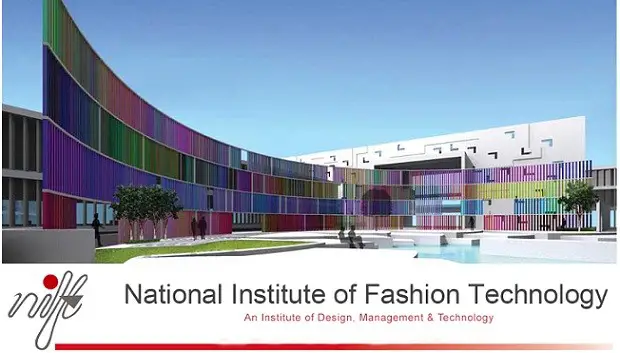
National Institute of Fashion Technology (NIFT): Its beginnings, alumni, and why its among the top fashion institutes in India.
Foundation of NIFT
A key factor behind the turning point of the fashion industry in India was the establishment of the National Institute of Fashion Technology (NIFT) in 1986.
Set up under the aegis of the ministry of textiles, the school was created to inject home-grown creativity into the garment making industry which, despite bringing in foreign exchange revenues through exports, was lacking in originality and innovative design.
“The growth of contemporary Indian fashion can be traced to 1986. Nift was established for training students in design, management and technology, paving the way for Indian designers to take leadership in the emerging global scenario,” says Rathi Vinay Jha, director general of the Fashion Design Council of India (FDCI).
The school was the brainchild of Pupul Jayakar, known as India’s “czarina of culture”, who was then adviser to then prime minister Indira Gandhi on cultural and heritage matters; today, the fashion school regards itself as a benchmark in the industry to which other fashion institutions aspire.
The founders wanted the school to be very professional and run to international standards. Because India had no experience in fashion education back then, NIFT partnered with New York’s Fashion Institute of Technology (FIT). They were very involved with the industry, and a five-year agreement was signed with them.
Before NIFT came in, the export business was really taking off but India really didn’t have professionally skilled trained people to help the growth of this export business. Nift studied the requirements and needs of the industry and started off with three programmes—design, management and technology—and each of these was focused on imparting technically sound education to the students.
Changing Perceptions of Fashion
Along with instituting a change in perception within the industry as to the value of fashion design education, the faculty and founders of Nift found themselves gradually bringing about a change in cultural and social attitudes.
“Fashion was always treated like a frivolous activity, and it was treated as a profession which only was about gender bending and people getting into all kinds of nefarious activities. I think Nift has been instrumental in bringing about realization amongst people in India that fashion is a serious profession. In the beginning, it was very difficult for us to make people understand this. They would think that fashion is only glamour, money, models and fashion shows.” Asha Baxi, dean of studies at Nift.
Today, males outperform females at the school, with the majority of award winners being male, and the proportion of males to females standing at roughly equal.
The school also credits itself with infusing the design industry with pride in itself, so that international success was no longer held up as the sole measure of success and designers could consider themselves established on the basis of national acclaim.
Additionally, the school has seen itself ride the retail boom, which has expanded the range of opportunities offered to young designers.
“Nift incubates you to be part of the industry and it lets you go out to the villages and intern within the industry. It is also one of the most recognized fashion institutions in the world, so it gives you good prospects,” student at NIFT
NIFT – Fashion Courses
Although the school is government-run, the curriculum remains independent of policy: They don’t impact at all and they don’t interfere with our curriculum. Government policies may impact NIFT indirectly but not otherwise.
NIFT offers courses for both undergraduate and postgraduate students.
Undergraduate students applying to the four-year BFTech (bachelor programme in fashion technology) can specialize either in design or technology. Within design, the courses covered include design training in fashion, leather, accessories, textile and knitwear, as well as fashion communication, while the core focus for technology students is apparel production.
At the postgraduate level, Nift offers two-year master’s degrees in the design, management and technology specializations.
Along with training in basic design skills and methods, undergraduate students are required to take core courses in technology that involve production processes and materials sciences, as well as undergo education in marketing, promotion and merchandising, get a grounding in the “socio-cultural” history of fashion, art and design. The final element involves hands-on training through internships and field study.
In the last semester of the final year, students take part in a graduation project which, in the case of those specializing in fashion design, means creating an entire collection using the skills they have acquired including sourcing, pattern-making, cutting and stitching.
Top Alumni’s of NIFT
India’s leading fashion designers such as Ritu Beri, Manish Arora, Ashish Soni, Rajesh Pratap Singh (and many more) have studied fashion from NIFT.
However, they feel that the institute needs to encourage innovation and get more international faculty in the college.
“Nift is adequate for basic education. They are taught to conform rather than be independent nowadays. The training could do with more emphasis on pattern making and style. The experience students get from the internships could also be expanded out into active involvement with the industry,” says a leading fashion designer.
New Sub-Specializations
As part of its efforts to remain relevant and at the cutting edge of design, Nift helped set up FDCI in 1998. It also laid the foundations for the establishment of the International Foundation of Fashion Technology, which today has 25 members, and hosts meetings at which member institutes discuss and share ideas, research, trends and new ways of thinking about design and education.
The school also regularly looks to introduce new sub-specializations to meet changes within the industry and provide a variety of career options for its students.
In addition to a new course on styling, the school is currently contemplating introducing modules on the business of luxury, and even theatre and make-up.
NIFT Colleges in India / Abroad
From its inception in Delhi as a school for fashion design, Nift now has eight centres spread across India, in Kolkata, Chennai, Bangalore, Hyderabad, Gandhinagar and Rae Bareli. There are plans to open more centres, in Kannur, Bhopal, Shillong and Patna, as well as in Mauritius and even in the UAE and Malaysia.
“Nift has been growing at a very fast pace. There’s this pressure to expand because the government feels the industry is growing and we need to impart this professional education to students in different states. I think perhaps we would also constantly be looking at the new specializations, the new professions that are constantly emerging, for example, styling.”





